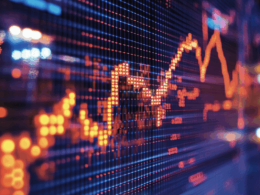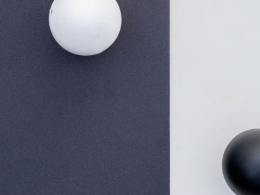by Kristina Hooper, Chief Global Market Strategist, Invesco
Key takeaways
Waiting for newsInvestors today are waiting for central banks to pivot, for companies to report earnings, for the latest news out of Ukraine, and much more. |
So what now?What should investors do in a holding pattern? I believe it’s important to stick to the long-term plan and to not overreact or make assumptions. |
I remember a rather uncomfortable flight I was on about 15 years ago. The weather was so bad that we were not being cleared to land in New York, and so we kept circling around in the vicinity, in a holding pattern. The pilot had “overshared” that there wasn’t much fuel left — he viewed it as a positive, suggesting that air traffic control would let us land first because of our low fuel level, but it only served to make the passengers (including me) more uneasy. Some passengers overreacted, which only made the situation worse. Finally, after sweating it out in the skies for what seemed like hours, we were cleared for landing — at Dulles Airport in Washington, D.C., since the weather in New York wasn’t getting any better. This was not the outcome I wanted, but it was certainly better than running out of gas.
I share all this because right now, it feels like we are in a holding pattern. In fact, we are in a bunch of holding patterns:
- We’re waiting to see when the U.S. Federal Reserve (Fed) — and other central banks — pivot. And that means we’re also waiting for better inflation data. We know the global economy is slowing after a dramatic hike in rates, and we are all waiting to see the data show a meaningful decline in inflation. Some are so eager to see those signs that they are overreacting to data showing signs of slowing (for example, last week’s ISM Manufacturing New Orders number and the Job Openings and Labor Turnover Survey for August). But it’s the inflation data that the Fed and other central banks will be looking for.
- We’re waiting for the labour market to get “less tight” in Western developed countries. In the U.S., the September jobs report was slightly better than expectations, with the unemployment rate moving lower. And labour force participation declined, which was disappointing. So while some progress is being made (average hourly earnings growth moderated), it doesn’t seem to be enough for the Fed. It’s a similar situation in the UK and eurozone, where unemployment remains very low. But it’s worse in the UK, where labour force participation also seems stuck in a rut like the U.S., than in the eurozone, where labour force participation has been rising. So the UK has a similar wage and general inflation problem as the U.S., both the eurozone and UK have a serious energy inflation problem, but at least the eurozone has a much smaller wage inflation issue.
- We’re waiting to see if we will go into a global recession, with more signs pointing to yes. Kristalina Georgieva, Managing Director of the International Monetary Fund, warned about it last week: “The risks of recession are rising … tightening monetary policy too much and too fast — and doing so in a synchronized manner across countries — could push many economies into prolonged recession.”1 The World Trade Organization released a similar warning last week. However, there is always the chance that if central banks pivot quickly enough, such a fate can be averted.
- While we do agree with the central banks that inflation has to be brought under control sooner rather than later, we realize this is an extraordinary monetary policy tightening environment and we are waiting to see if something “breaks” globally. The UK has come close, as a government tax-cut plan recently sparked a major sell-off in UK government debt and a sharp rise in yields. The Bank of England has stepped in with an emergency purchase program for long-dated UK government bonds, as well as other measures.
- We’re waiting for earnings season, to see how much damage has been done to companies’ revenues and earnings as a result of global monetary policy tightening. Earnings season will unfold in the coming weeks, illuminating what has happened in the third quarter. We will also be waiting on guidance for the fourth quarter.
- We’re waiting to see how the Russia-Ukraine war unfolds. U.S. President Joe Biden recently said that the world is the closest to “nuclear Armageddon” as it’s been since the Cuban Missile Crisis, and many of us are watching and waiting to see if the situation can be de-escalated. But even short of nuclear threats, Russia is now retaliating against Ukraine’s apparent success in destroying a Russian bridge to Crimea, by targeting civilian infrastructure and shelling Kyiv once again. This suggests we may be going back to a longer and more intensive battle that once again involves more of Ukraine than the eastern front.
- We’re waiting to see how bad winter is for Europe and whether European countries will be able to manage through it without major energy-related shutdowns.
- We’re waiting to see what happens at — and after — the China Party Congress. Oct. 16 marks the start of the 7th Plenum — the Chinese Communist Party's Congress that's held every five years — akin to an election. President Xi Jinping is expected to be elected for a norm-shattering third term and to deliver an all-important policy blueprint for the next five years. We don't expect any policy surprises, though the emphasis should likely be on stabilizing near-term growth and COVID containment while setting a foundation for the emerging Common Prosperity economic model.
What does this mean for investors?
So what should investors do in a holding pattern? Well, obviously, wait. And don’t overreact. Don’t assume the Fed or other central banks will be pivoting momentarily because ISM Manufacturing New Orders fell into contraction territory, and don’t assume the Fed will remain aggressive ad infinitum just because the U.S. jobs report for September didn’t indicate the economy is slowing quickly enough for the Fed. In short, I believe it’s important to stick to the long-term plan.
One area where investors may be underrepresented is dividend-paying stocks. I believe it makes sense to have exposure there, as one gets “paid to wait” through dividend payments. Those payments can be an important component of one’s portfolio when we’re all stuck in a holding pattern. And, for those who are overexposed to cash, as hard as it sounds, I believe investors should be getting ready to reposition for a recovery.
Conclusion
Back to the diverted flight story. Landing more than 200 miles from home wasn’t what any of us were expecting, but we adapted. I rented a car and wound up driving up to the NY area that evening with a member of the U.S. military. We had an interesting time talking about her perspective on geopolitics as well as the struggles of military life and her ambitious plans for the future. I learned a lot on that trip, and I was grateful for that experience. I suspect we will learn a lot from the next few months, as long as we don’t overreact and keep our eyes on long-term goals
With contributions from Arnab Das and David Chao
Footnotes
- 1Source: Barron’s, “IMF chief urges action as global recession risks rise,” Oct. 6, 2022
















